From The Book of Fashionable Life by A Member of the Royal Household (London, n.d.)
ARTISTS / CARICATURISTS OF THE REGENCY ERA – HENRY ALKEN(1785-1851) – PART ONE
Louisa Cornell
Henry Alken was an English painter and engraver best known for his caricatures and sporting and coaching scene illustrations.Whilst his work is not as well-known as that of others who specialized in similar artistic endeavors, his talent was every bit as great and his influence on the British art of the sporting world cannot be measured.
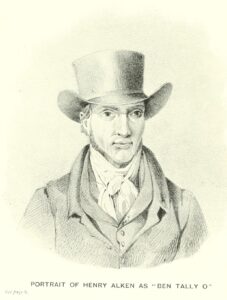
He was born on October 12, 1785 in the Soho neighborhood of Westminster London. His father was Samuel Alken who was a sporting artist. His brother, Samuel Alken the Younger, also became an artist. The father’s success as an artist enabled the family to move to Bedford Square when Henry was around four years of age.
Henry first studied art with his father. He showed such promise, he was soon under the tutelage of the miniaturist, Thomas Barber Beaumont (1774-1841,) who was also known as T.J. Barber. In 1801, at the age of sixteen Henry submitted a miniature portrait of Miss Gubbins to the Royal Academy Exhibition. He would exhibit a second miniature at the Academy before moving on from miniature painting to regular painting and illustrating. Early in this part of his career he painted sporting subjects under the name of “Ben Tally-O.” It is believed he used this name until 1816.

From 1816 forward Henry Alken produced an innumerable number of paintings, drawings, and engravings of every variety of field and sporting activity. His soft-ground etchings were often colored by hand. His success was such that he moved his wife and children over a shop in Haymarket which was owned by a print publisher, Thomas McLean. McLean published the Repository of Wit and Humor in which many of Alken’s satirical prints first appeared. He paid Alken a salary of thirty shillings a day, considered an excellent income at this time.
Alken worked in oils and watercolors. He was a skilled etcher as many of his prints show.

Etching by Henry Alken
1820
In 1816 he issued the first major collection of his work under his own name. The beauties & defects in the figure of the horse / comparatively delineated was published by S. & J. Fuller, at the Temple of Fancy, 34, Rathbone Place, London. It contains a series of hand- colored soft-ground etchings which are essentially studies in equine anatomy. One can view this work at the link below.
https://collections.britishart.yale.edu/catalog/orbis:12524527
From 1816 until 1831 he created many sets of etchings of sporting scenes and subjects. They were colored for the most part and some were quite humorous in nature. These sets included:
Humorous Specimens of Riding – published in 1821
Symptoms of Being Amazed – published in 1822
Symptoms of Being Amused – published in 1822
Flowers from Nature – published in 1823
A Touch at the Fine Arts – published in 1824
Ideas – published in 1830
He also published a number of books. These included:
Illustrations for Landscape Scenery – published in 1823
Scraps from the Sketch Book of Henry Alken – published in 1823
New Sketch Book – published in 1824
Sporting Scrap Book – published in 1827
Shakespeare’s Seven Ages – published in 1827
Sporting Sketches – published in 1831
Illustrations to Popular Songs – published in 1831
Illustrations of Don Quixote – published in 1831
Alken’s work was appreciated in his day to such a degree he provided the plates that pictured hunting, coaching, racing, and steeplechasing for The National Sports of Great Britain published in 1821. In fact, he is best remembered for his hunting prints, both serious and satirical, many of which he engraved himself until the 1830’s. He created prints for Ackermann. In 1842 Ackermann published Life of a Sportsman by Charles James Apperley (1779-1843) who was also known as Nimrod. The book included 32 etchings by Henry Alken.

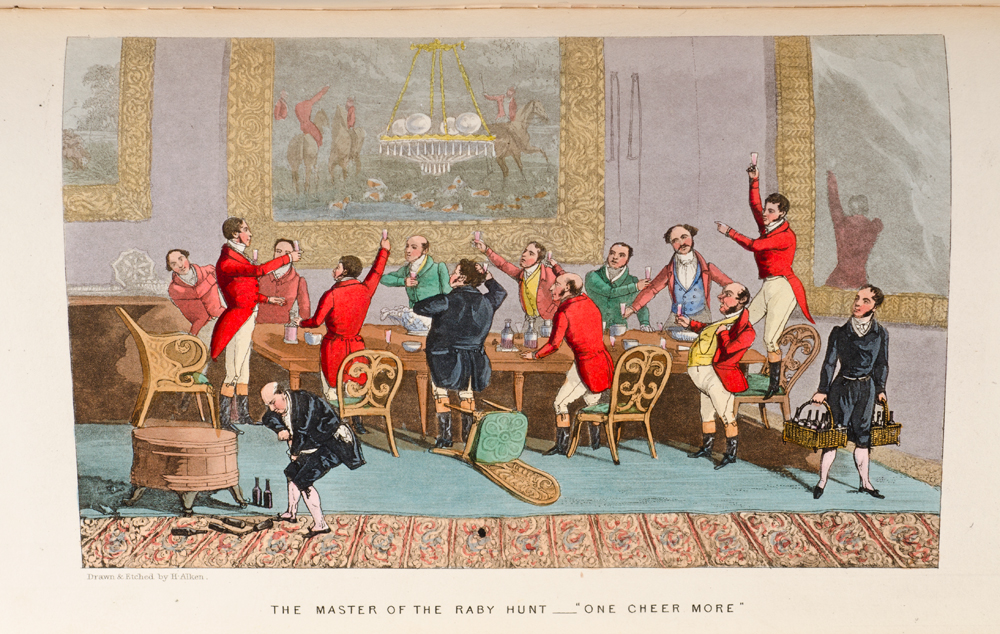
Alken died in April 1851. He left behind a widow, Maria Gordon Alken, and five adult children. Two of his sons followed in their father’s footsteps and had careers as artists – Henry Thomas Alken and Seffererien Alken.
IN PART TWO – We will explore Alken’s work in a difference areas in a bit more detail.
CHRISTMAS AT HOME – CHATSWORTH
Louisa Cornell
For our next Christmas visit we will stop to marvel at the glory that is Chatsworth in the Derbyshire Dales. Home to the Dukes of Devonshire, it has belonged to the Cavendish family since 1549. The house is home to some of the most important collections of art, furniture, books, Old Master drawings, and neoclassical sculptures in the world. Beneath Chatsworth’s half-a-hectare lead roof there are over 300 rooms, 17 staircases, 459 windows and 2,084 light bulbs.
The house has been featured in numerous period films, including the 2005 version of Pride and Prejudice where it played the role of Mr. Darcy’s Pemberley. I visited Chatsworth in 1968 when I was ten years old. I will admit I was so awestruck I could not really fully appreciate everything about this amazing home. Hopefully the next time I visit I’ll be much better able to appreciate it!
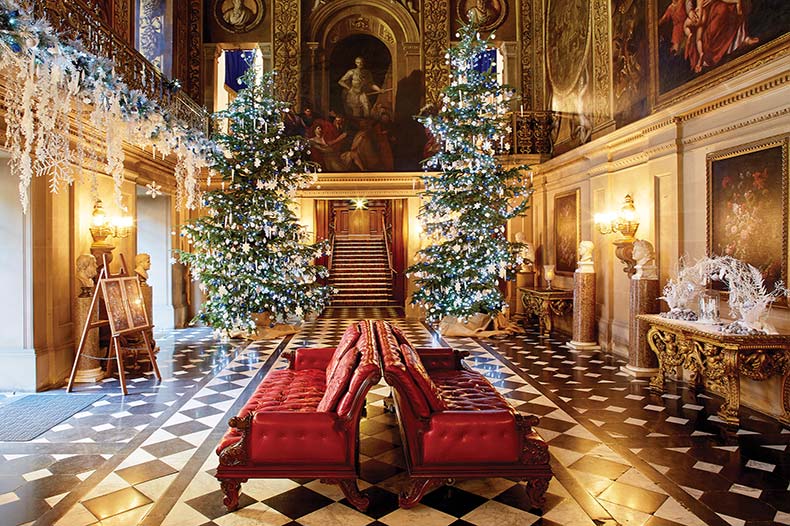
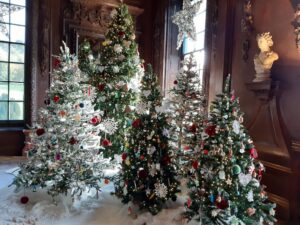
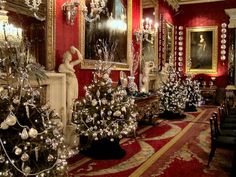
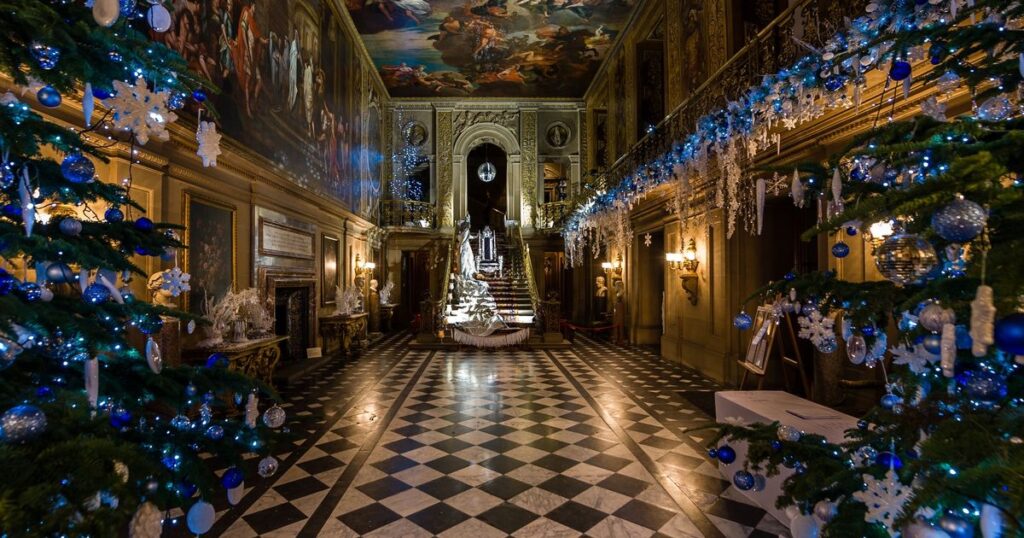
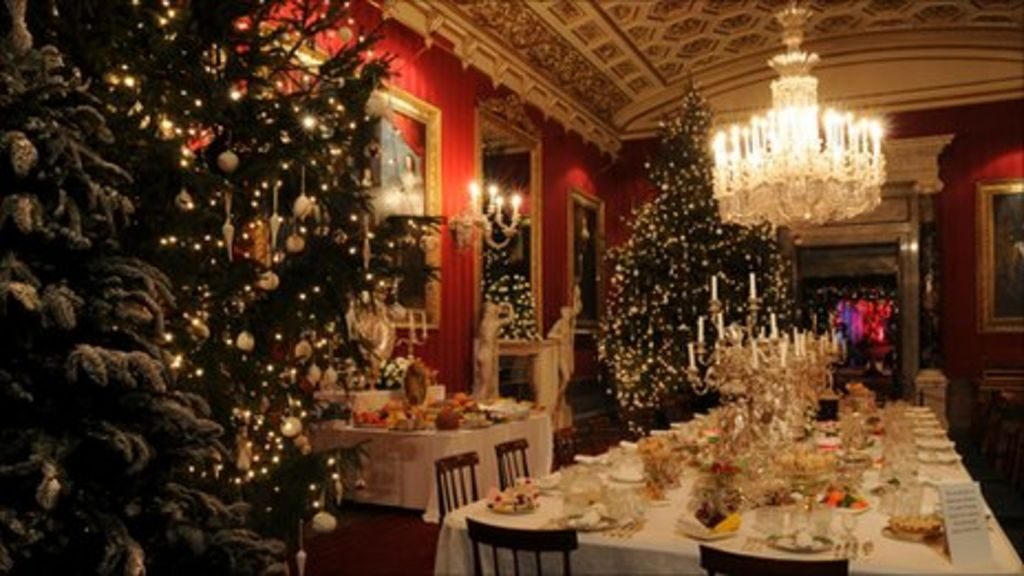

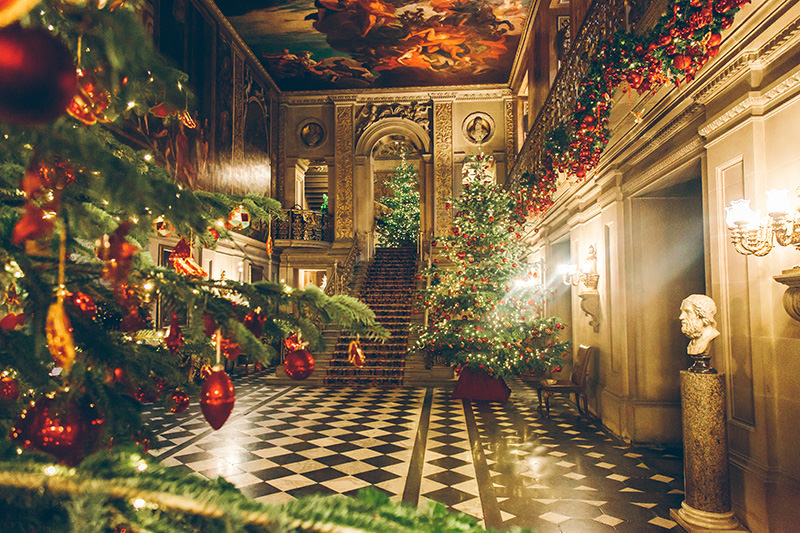
I have included several views of the painted hall in different years as the people who come up with the themes each year do an amazing job! Wouldn’t you agree?
Chatsworth is another house featured in Number One London Tours Country House Tour (September 16-24, 2022. Check this link for more information!
http://numberonelondontours.com/tours/upstairsdownstairs-country-house-tour/
CHRISTMAS AT HOME – HADDON HALL
The next stop on our Christmas pilgrimage through the stately homes of England is Haddon Hall which is located near the River Wye in Derbyshire. The original house was built in the 11th century and additions were made in the 13th and 17th centuries. The house is considered one of the finest examples of a Tudor manor house in existence. It was once the family seat of the Dukes of Rutland and is currently the home of Lord Edward Manners and his family, brother to the current duke.
The exterior and many of the interior rooms of Haddon Hall have been used in numerous films and television programs. It is most easily recognized as the location of Prince Humperdinck’s castle in The Princess Bride ! However, it has also been used in various versions and adaptations of Jane Eyre and was used in the 2005 film version of Pride and Prejudice.
I cannot begin to imagine the fun it would be to decorate a Tudor manor for Christmas, but here are some photos to fill all of our Christmas dreams!
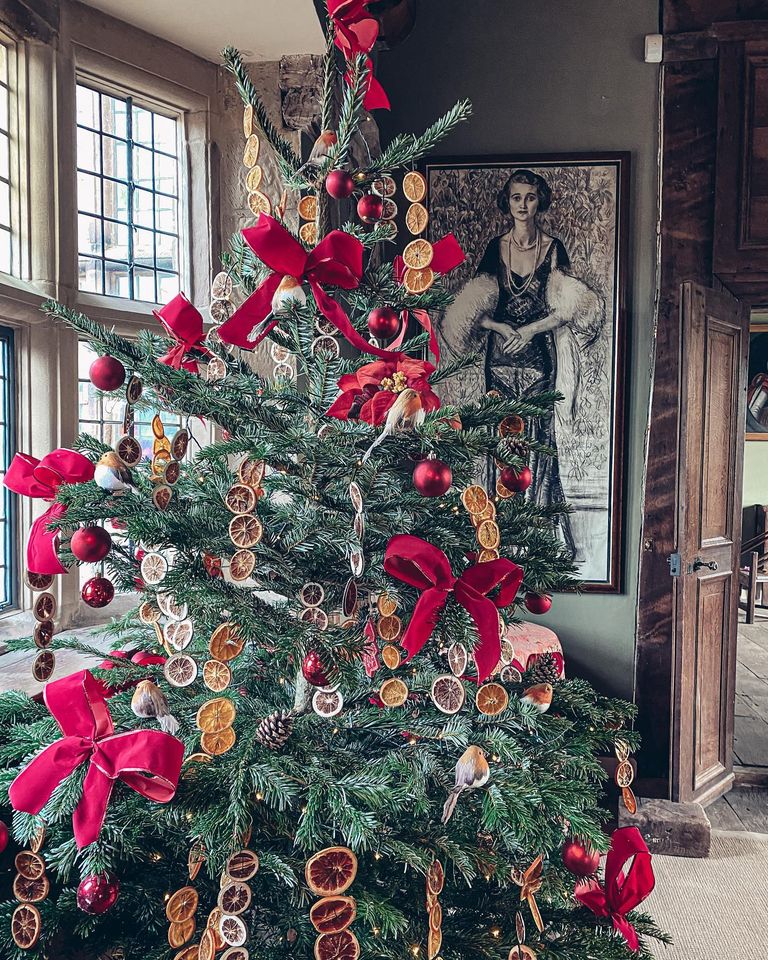
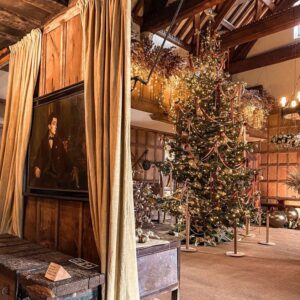
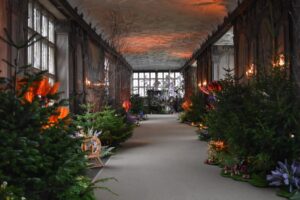
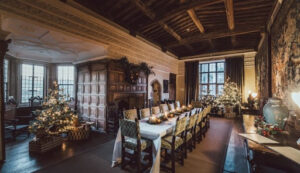
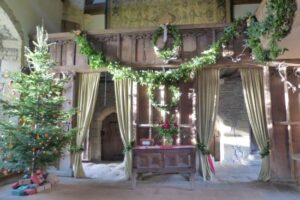

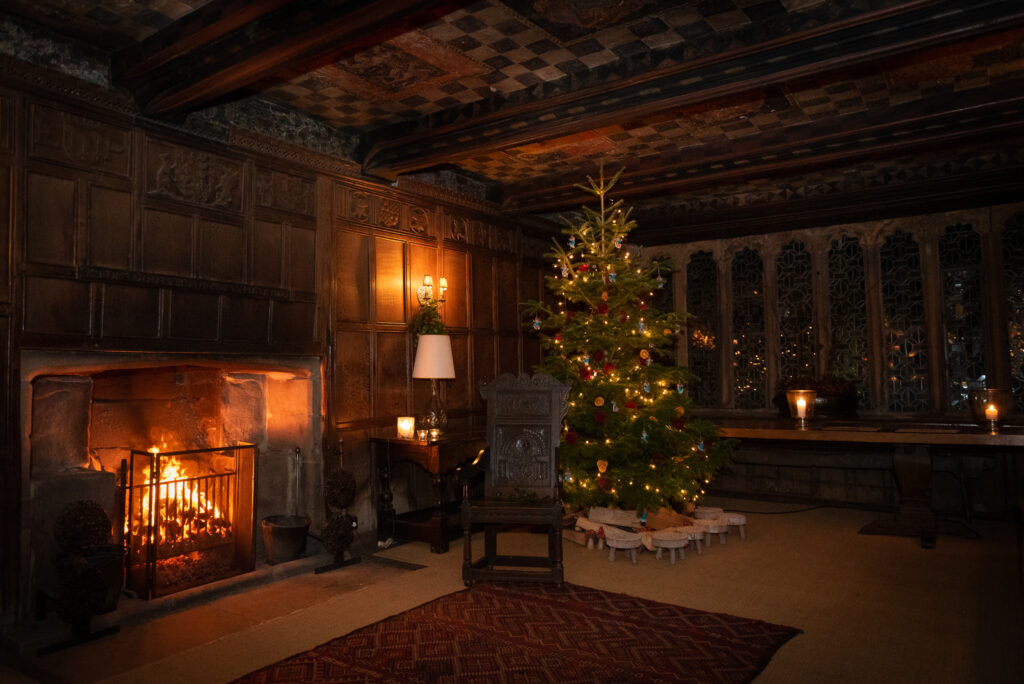

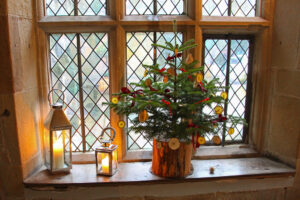

The natural decorations are a tribute to Haddon Hall’s Tudor heritage. Can’t you almost smell the oranges and the cinnamon?
CHRISTMAS AT HOME – HAREWOOD HOUSE
Louisa Cornell
Our Christmas tour of English stately homes takes us next to West Yorkshire where we find Harewood House. It was built between 1759 and 1771. The architects were John Carr and Robert Adam and the 1000 acres of grounds were designed by Lancelot “Capability” Brown. It is considered one of the great treasure houses of England. Not bad for a home built for a humble baron at the time!
The Yellow Drawing Room decorated for an evening of cards and coffee perhaps?
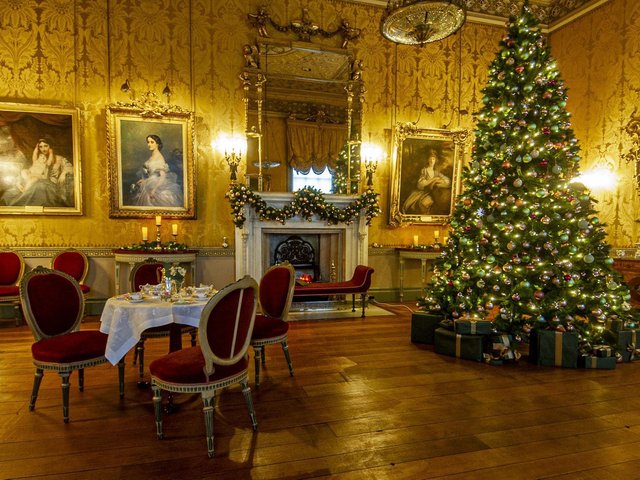
A child’s Christmas in the library. 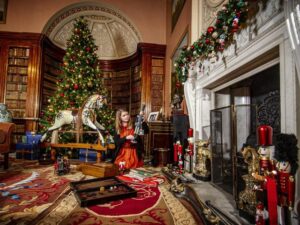
The entrance hall all decked out for Christmas.
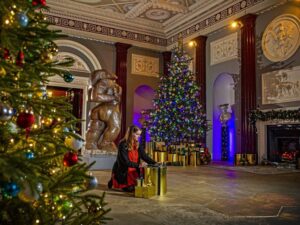
You knew we would have to visit the music room. This lovely venue is considered the most complete example of Robert Adam’s interiors at Harewood House.
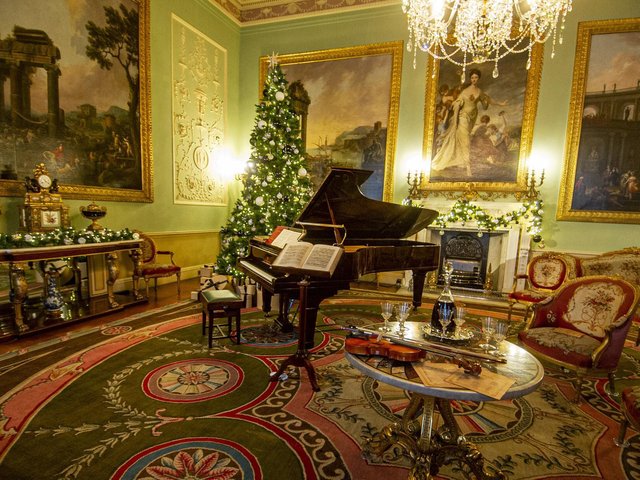
A formal dining room allows one to set a spectacular holiday table!

 Tabletop tree in the yellow drawing room.
Tabletop tree in the yellow drawing room.

Another portion of the entrance hall. Notice the lovely Adam interior enhanced by the old-fashioned Christmas tree.
How does one decorate the library for Christmas? Why with a book tree, of course!

The Nativity set up in the Long Gallery.
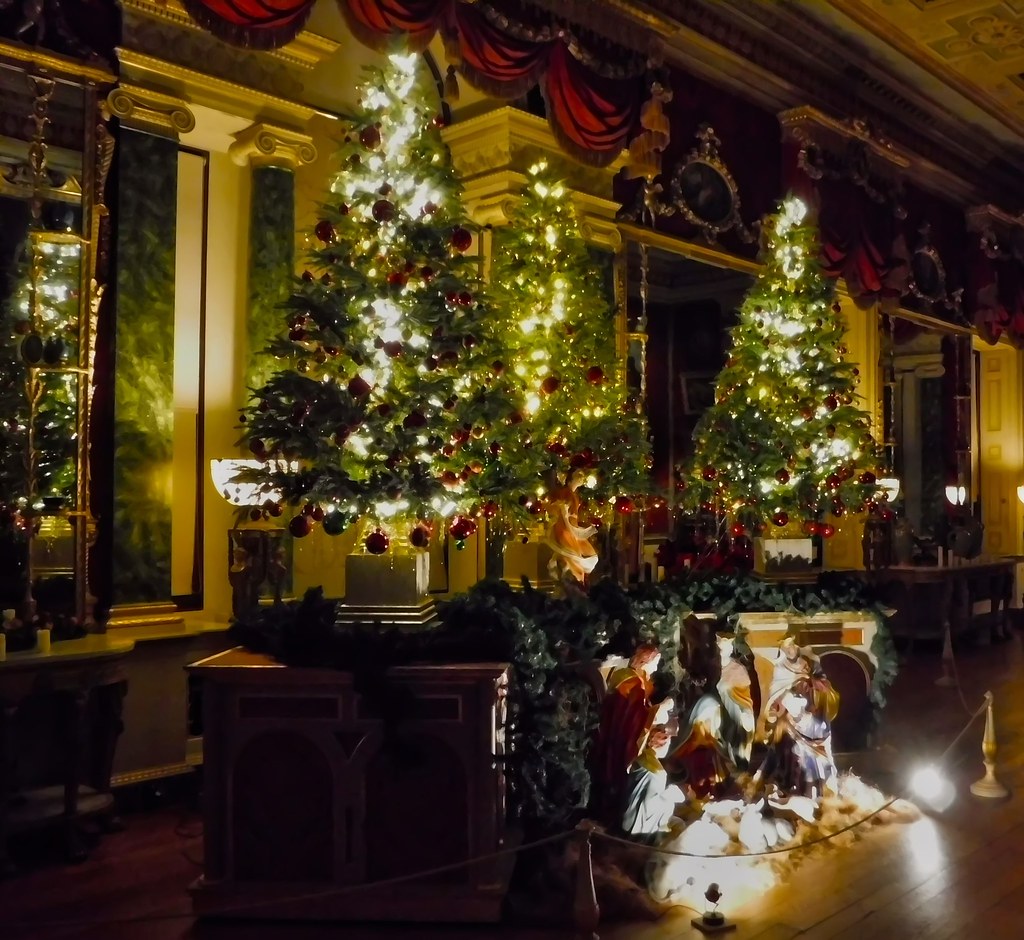
Check back for a visit to another stately home in all of its Christmas splendor. And if you want to see the wonders of Harewood House in person you might want to join Number One London Tours’ Country House Tour scheduled for September, 2022. You can find more details here:
